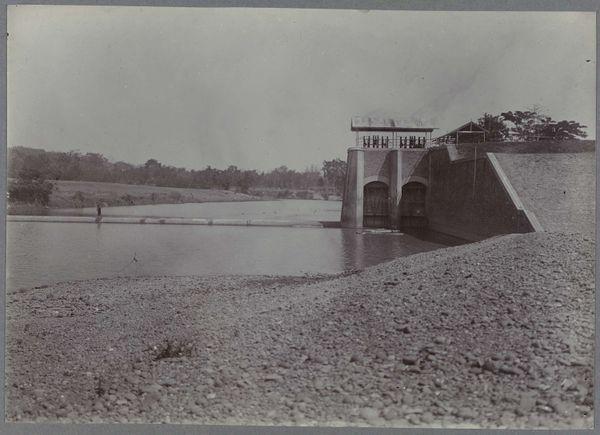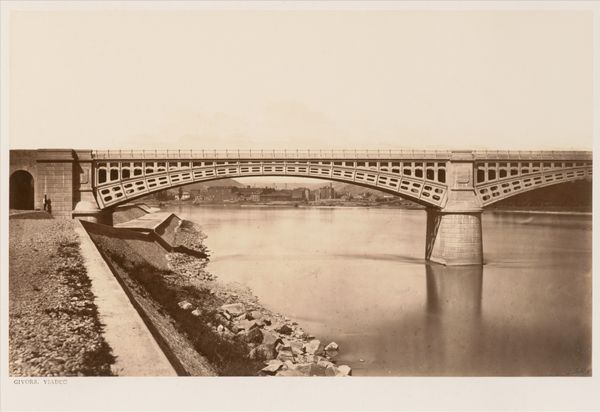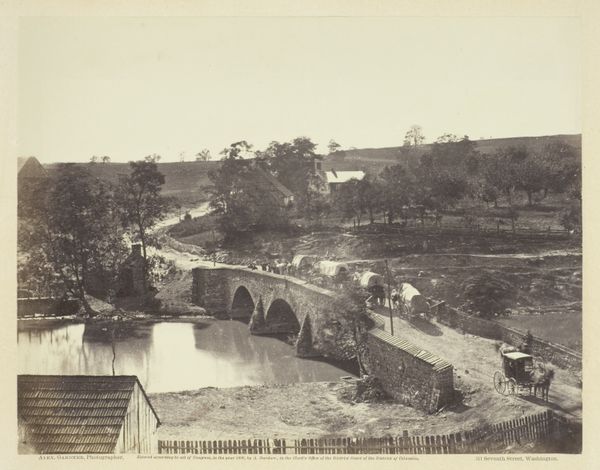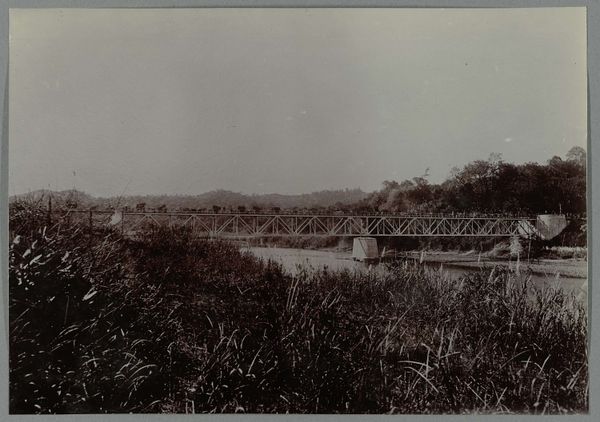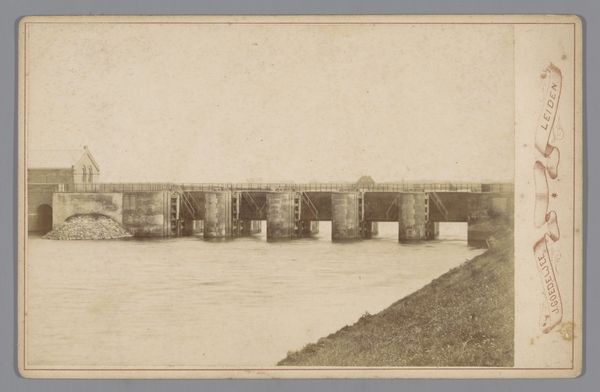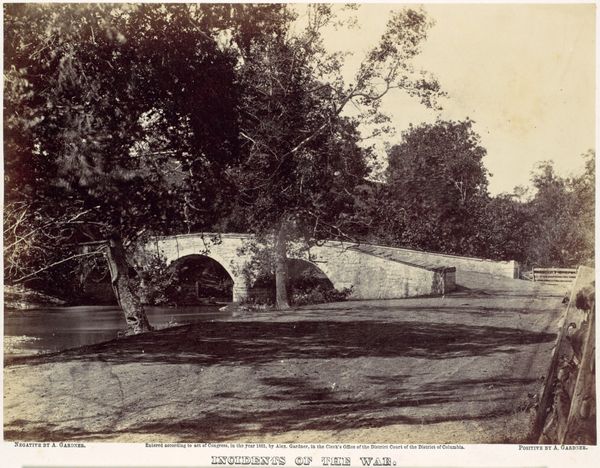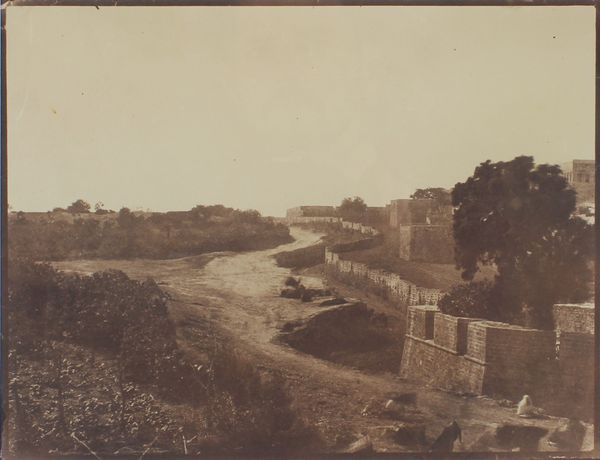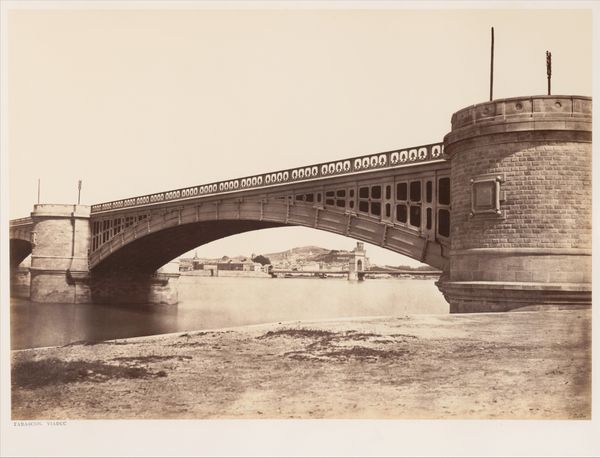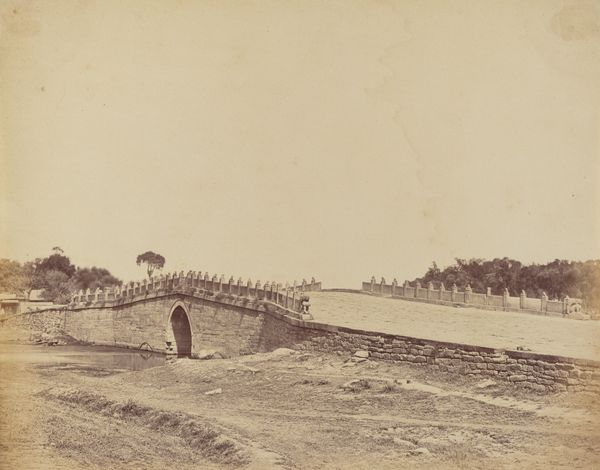
Dimensions: 23.7 x 30.4 cm. (9 5/16 x 12 in.)
Copyright: Public Domain
Félix Teynard made this photograph of the bridge at Esna, in Egypt, using the calotype process. The calotype was one of the earliest photographic processes, and Teynard was part of a generation of French photographers who carried their equipment to far-flung places in order to document them. Photography's unique selling point in the nineteenth century was its supposed objectivity, but we need to remember that the photographer was always an active agent in framing the image. Teynard was working in Egypt at a time of increasing European involvement in the country. Egypt was nominally part of the Ottoman Empire, but it was increasingly subject to British and French influence. Photography played a central role in the colonial project, by creating a visual record of the colonized world that could be consumed by audiences back in Europe. To understand Teynard's image fully, we need to look not just at the photograph itself, but at the whole institutional and political context in which it was produced and consumed.
Comments
No comments
Be the first to comment and join the conversation on the ultimate creative platform.
